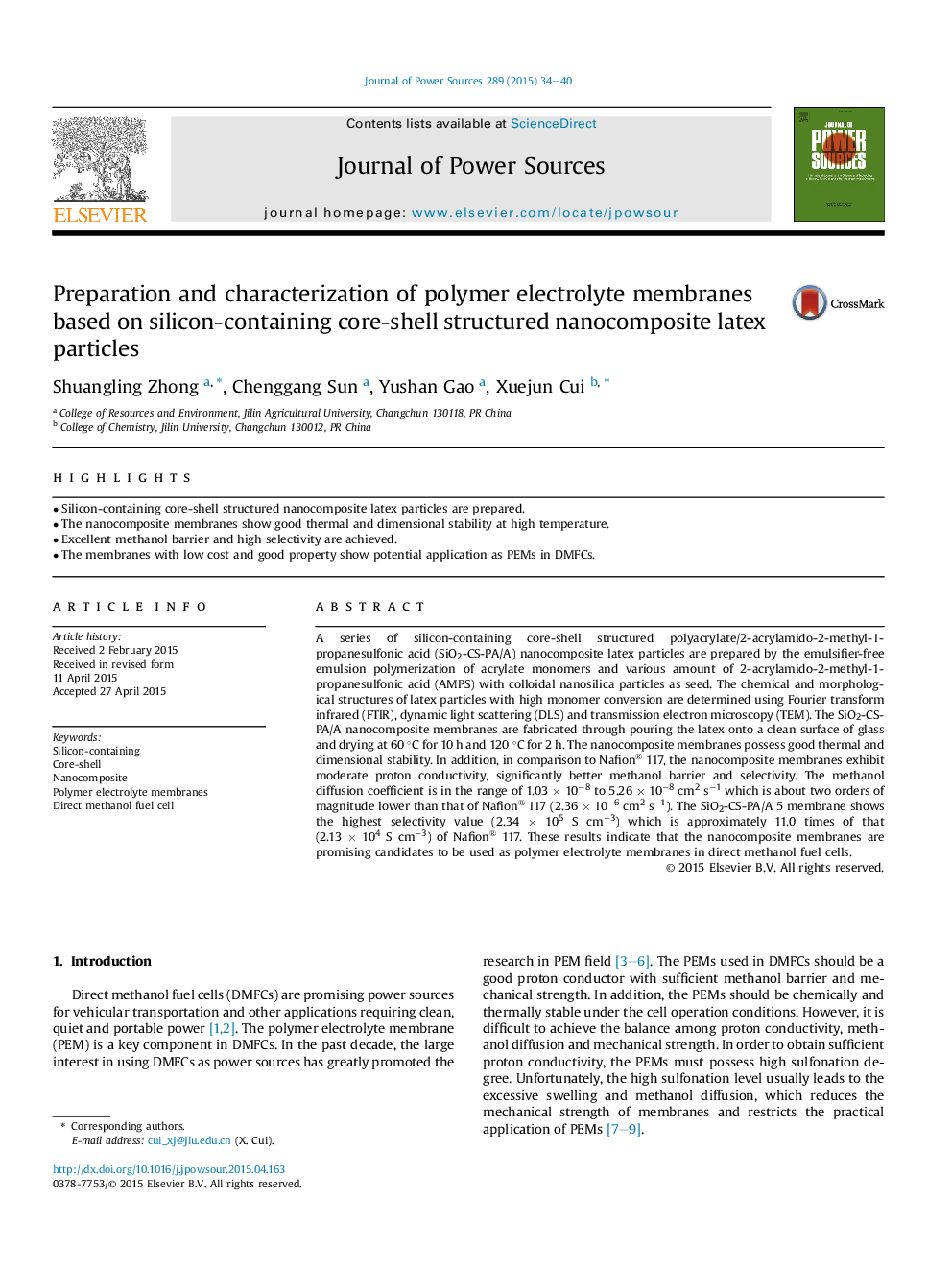| Article ID | Journal | Published Year | Pages | File Type |
|---|---|---|---|---|
| 7731697 | Journal of Power Sources | 2015 | 7 Pages |
Abstract
A series of silicon-containing core-shell structured polyacrylate/2-acrylamido-2-methyl-1-propanesulfonic acid (SiO2-CS-PA/A) nanocomposite latex particles are prepared by the emulsifier-free emulsion polymerization of acrylate monomers and various amount of 2-acrylamido-2-methyl-1-propanesulfonic acid (AMPS) with colloidal nanosilica particles as seed. The chemical and morphological structures of latex particles with high monomer conversion are determined using Fourier transform infrared (FTIR), dynamic light scattering (DLS) and transmission electron microscopy (TEM). The SiO2-CS-PA/A nanocomposite membranes are fabricated through pouring the latex onto a clean surface of glass and drying at 60 °C for 10 h and 120 °C for 2 h. The nanocomposite membranes possess good thermal and dimensional stability. In addition, in comparison to Nafion® 117, the nanocomposite membranes exhibit moderate proton conductivity, significantly better methanol barrier and selectivity. The methanol diffusion coefficient is in the range of 1.03 Ã 10â8 to 5.26 Ã 10â8 cm2 sâ1 which is about two orders of magnitude lower than that of Nafion® 117 (2.36 Ã 10â6 cm2 sâ1). The SiO2-CS-PA/A 5 membrane shows the highest selectivity value (2.34 Ã 105 S cmâ3) which is approximately 11.0 times of that (2.13 Ã 104 S cmâ3) of Nafion® 117. These results indicate that the nanocomposite membranes are promising candidates to be used as polymer electrolyte membranes in direct methanol fuel cells.
Related Topics
Physical Sciences and Engineering
Chemistry
Electrochemistry
Authors
Shuangling Zhong, Chenggang Sun, Yushan Gao, Xuejun Cui,
